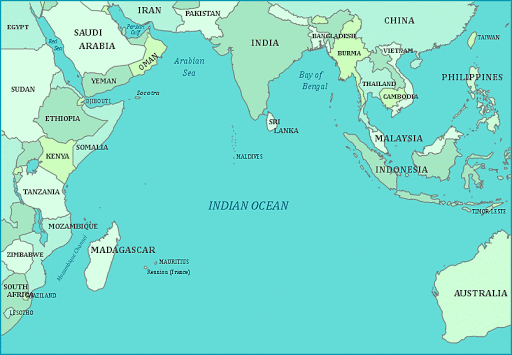Why in news?
Indian Prime Minister Narendra Modi and the Australian premier, Scott Morrison recently held a virtual summit.
What is the significance?
- India has for long been preoccupied with the perennial challenges in the neighbourhood and the ties with the great powers.
- It has, in the past, missed out on the opportunities for productive partnerships with the middle powers.
- Few countries have been underestimated in India such as Australia.
- The recent summit thus is an effort to plug that gap in India’s diplomatic tradition.
What are Australia's strengths?
- With a GDP of more than US$1.4 trillion, Australia is the 13th largest economy in the world.
- This is followed closely behind Russia that stands at $1.6 trillion.
- Australia is rich in natural resources that India’s growing economy needs.
- It also has huge reservoirs of strength in higher education, scientific and technological research.
- In the global diplomatic arena, Australia has a significant place than is believed.
- Its armed forces, hardened by international combat, are widely respected.
- Canberra’s intelligence establishment is valued in many parts of the world.
- Australia has deep economic, political and security connections with the ASEAN.
- It also has a strategic partnership with one of the leading non-aligned nations, Indonesia.
- Canberra has a little “sphere of influence” of its own in the South Pacific (now under threat from Chinese penetration).
How relevant are these for India?
- All these Australian strengths should be of interest and value to India.
- India’s first Prime Minister, Jawaharlal Nehru, believed Australia is a natural part of Asia.
- He invited Australia to participate in the Asian Relations Conference in Delhi in 1947, a few months before independence.
- But the rest of the 20th century did not see much cooperation between the two countries.
How has the relationship been in the last few decades?
- India's nuclear tests in 1998 have been significant in changing the course of relationship with Australia.
- The following political differences between Delhi and Canberra complicated the possibilities that the end of the Cold War opened up.
- But since 2000, Canberra has taken consistent political initiative to advance ties with India.
- It has worked on resolving the nuclear difference and expanding the template of engagement.
- Notably, there was a gap of nearly three decades between Rajiv Gandhi’s visit to Australia in 1986 and Modi’s trip in 2014.
What are the challenges?
- It was exactly in that gap of nearly three decades that China transformed its relationship with Australia.
- Delhi’s temptation to judge nations on the basis of their alignments with other powers stands in contrast to Beijing.
- Beijing always seems to put interests above ideology.
- China promotes interdependence with a targeted middle power.
- It then turns it into political influence and tries to weaken its alignment with the rival powers.
- However, now, India-Australia ties are being renewed with India's new political will to liberate its relations from ideological prejudice.
What are the scopeful areas of cooperation?
- The Indian diaspora, now estimated at nearly 7,00,000, is the fastest growing in Australia.
- This has become an unexpected positive factor in the bilateral relations.
- Besides, there is common membership of many groupings like the G-20, East Asia Summit, IORA, and the Quad.
- This has increased the possibilities for diplomatic cooperation on regional and global issues.
- The current downturn in the global economy limits the immediate possibilities for realising the full potential of commercial relations.
- But there are a host of emerging issues.
- Some of them include reforming the WHO, 5G technology, strengthening the international solar alliance, building resilience against climate change and disasters.
- The geopolitical events in the Indo-Pacific have opened up a massive space for consequential security cooperation between the two countries.
- Over the last few years, defence engagement between the two countries has also grown.

What is the way forward?
- With growing Chinese assertiveness and the uncertain US political trajectory, Delhi and Canberra need new ways of securing their interests.
- The scale of the security challenge in the Indo-Pacific demands more than incremental steps.
- Security establishments must develop strategic coordination in the various sub-regions of the Indo-Pacific littoral.
- Lying at the heart of the Indo-Pacific, Eastern Indian Ocean connects the two oceans, where the two countries can initiate a full range of joint activities.
- These might include maritime domain awareness, development of strategically located islands and marine scientific research.
- The sea lines of communication between the Indian and Pacific oceans run through the Indonesian archipelago.
- There is also a shared political commitment to the Indo-Pacific idea between Delhi, Jakarta and Canberra.
- Modi and Morrison must thus seek trilateral maritime and naval cooperation with Indonesia.
- Besides Indonesia, three other powers present themselves as natural partners for India and Australia - Japan, France and Britain.
- Enhanced trilateral engagements at diplomatic and practical maritime level with each of these will go a long way in securing geopolitical interests.
- Notably, Britain wants to return to the oriental seas.
- In the east, Britain continues to lead the so-called Five Power Defence Arrangement (FDPA) set up back in 1971, after Britain pulled back most of its forces from the East of Suez.
- The FPDA brings together the armed forces of the UK, Malaysia, Singapore, Australia and New Zealand.
- Modi and Morrison must explore the possibilities for engagement between India and the FPDA.
- In all, building a series of overlapping bilateral and minilateral platforms for regional security cooperation by Delhi and Canberra is what is called for now.
Source: Indian Express
